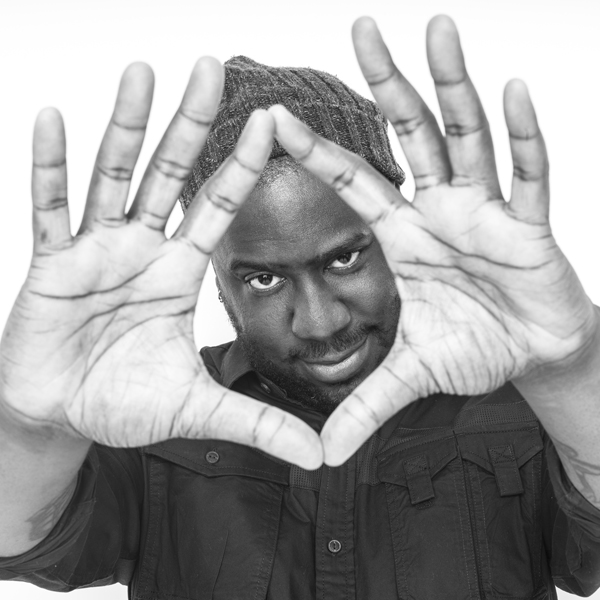September 16, 2016
After dominating the jazz charts, winning a couple R&B Grammys, and recording with everyone from Erykah Badu to Norah Jones to Snoop Dogg, what’s next for a band like the Robert Glasper Experiment? When the group’s leader scores a Miles Davis film, plays keys all over albums from Kendrick Lamar’s To Pimp A Butterfly to Anderson .Paak’s Malibu to Maxwell’s blackSUMMERS’night, and is currently collaborating on forthcoming albums from Herbie Hancock, Common, and Mac Miller, what can you do to level up? “You do you,” says Glasper with a chuckle. “People need to hear what the Experiment sounds like, just us—know what our vibe is and can be.”
On ArtScience, the Experiment sounds like a bit of everything that’s vibrant and challenging and great about music, woven into a billowing fabric of jazz, funk, soul, rock, hip-hop, blues, disco, electronic, and pop—if the Black Radio albums evoked the crash-proof airplane “black box” in their title, this one’s a parachute carrying us to unimagined vistas. But to fully understand what this quartet’s accomplished, you need to know some things. This is the first Experiment LP where all members write and produce, and the first with no guest vocalists. That means everyone—sax man and vocalist Casey Benjamin, bassist Derrick Hodge, drummer Mark Colenburg, and Glasper himself—sings. It also means you’re hearing the freest version of the Experiment yet.
That’s by design, of course. “I wanted to do this record in a place where we don’t know a lot of people,” says Glasper. “In New York or LA, it’d end up being a hang, so we locked ourselves in a studio in New Orleans for two weeks and wrote the whole thing there. Our only inspiration was: ‘Fuck it. Let’s do what we feel.'” They ate good food, did good work, and threw a cheap, intimate pop-up show for the heads. It was “like camp,” and with that intense focus, ArtScience became a thing of huge breadth.
There’s Benjamin’s disco-funk seduction “Day to Day,” and the Hodge-led “Find You,” where drums snap like firecrackers as moods and genres flit past rapidly. The Colenburg co-write “In My Mind” marries cascades of brass and Rhodes to melodies that keep shifting. Glasper’s own “Let’s Fall in Love” offers minimal R&B set to trap percussion and a syrupy groove, which highlights something else: Even as the band slides in and out of styles and eras, there’s something perfectly “now” about their use of Autotune, which grew from Glasper’s long-running affinity with the vocoder.
An unintended theme arose too: relationships—the ups, the downs, and, especially, the part where you make amends. “Thinkin Bout You” is a tribute to the ones who stay home while the Experiment’s touring. “You and Me” is a bona fide slow jam. And “Hurry Slowly,” swirls Steely Dan, Stevie Wonder, and Radiohead into a slinky tribute to love’s odd time signatures. Their cover of Human League’s classic mea culpa “Human” fits the theme. “We’ve all been there,” Glasper laughs.
Family and friends figure into ArtScience in other ways too. One of the interludes features Glasper’s son. “He’s speaking his mind,” says the bandleader. “He was 5 and the Michael Brown case came on the news and he started going off.” Indeed, the boy, unprompted, speaks for a lot of us: “It’s not fair! We should let other people live! … Let’s try to make the polices better … like real polices that help. No gun shooting!” Album opener “This Is Not Fear” comes from a similar place. The Experiment was in New Orleans when they heard about Yasiin Bey’s arrest in South Africa, which sparked a talk about how authorities treat black men. For this one, they didn’t need words.
“It comes in on fast swing, then transcends into a beat as you hear our voices going ‘hmm-mmm,’ like a hymnal,” says Glasper. “In other words, jazz into hip-hop is then to now, and us singing spirituals to get through some shit ain’t nothing new.”
Balancing art and science is something Glasper’s been working at his entire career—cutting that sheer musical ability with the sort of songwriting that simply resonates with the heart. Crossing over isn’t easy, but it’s been his thing for as long as he can remember. His mother was music director at their Houston church, where Glasper would first play keys for a crowd. She also sang jazz and blues at clubs by night, and brought the child (he’d eventually accompany her). That mixture became his sonic bedrock, and it went with him to the city’s esteemed High School for the Performing and Visual Arts, and on to the New School for Jazz and Contemporary Music in New York. By 2005, when Glasper signed with Blue Note, he’d become an accomplished sideman to Christian McBride, Kenny Garrett, Roy Hargrove, and more.
That’s when he made the decision. “No more side gigs,” says Glasper. “I’ll do my own thing in jazz, and if I play for anyone else it’ll be a different genre because eventually I want to make albums in those genres.” So he worked as music director for Mos Def and Bilal, hit the studio with Q-Tip, Kanye West, and Erykah Badu, and did a world tour with Maxwell, all while releasing jazz LPs that drew steady acclaim. His worlds merged on the first full Experiment album, 2012’s Black Radio, which scored a Top Jazz Albums No. 1 and won the year’s Best R&B Album Grammy. The Experiment didn’t just cross over; they revitalized their genre. Black Radio 2 (2013) brought even more thrilling cameos, and another Grammy.
In 2015, Glasper reset with Covered, recorded live in Capitol Studios with his original acoustic trio featuring bassist Vicente Archer and drummer Damion Reid, but his choice in source material was key: John Legend, Joni Mitchell, Radiohead, and Kendrick Lamar to name a few. He also composed for Don Cheadle’s Miles Ahead film, plus reinterpreted Davis’ catalog on Everything Is Beautiful, which came out earlier in 2016. Which brings us back to the beginning. When you’ve earned your bona fides, sure, it makes sense to follow your muse. But along the way, with so many potential paths to take—unplugged or electric, guests or no, jazz or hip-hop or R&B or fusion—how does Glasper always manage to take the listener on exactly the right adventure for exactly the right moment?
The answer, it turns out, is a little bit of art and a little bit of science. “I feel like I lick my finger and put it in the air, and see which way the wind is blowing,” he says. And when he gets a feel for what’s going on, he knows: “Hmm, that’s what’s needed in the world right now.”
ArtScience is available on Amazon, iTunes and the Robert Glasper Store.







